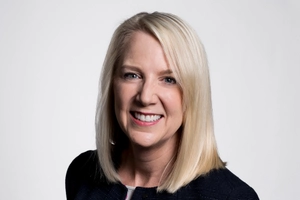 Anyone sick of hearing about the so-called safe withdrawal rate? Bill Bengen’s high-profile 4% formula lasted almost three decades, but inflation, COVID, a war in Europe, and hyper-volatility caused a recent retirement income rethink.
Anyone sick of hearing about the so-called safe withdrawal rate? Bill Bengen’s high-profile 4% formula lasted almost three decades, but inflation, COVID, a war in Europe, and hyper-volatility caused a recent retirement income rethink.
Surprisingly, Morningstar’s withdrawal estimates actually increased, despite recession threats and heightened sequence-of-return risk. Dropping to 3.3% for those retiring at the beginning of 2022, it’s almost back to the standard (and starting) 4% after a year that experienced the worst-performing market since 2008.
“At the end of September 2022, we were pretty close to a 4% starting safe withdrawal rate,” Christine Benz, Morningstar’s Director of Personal Finance, said. “So, it’s kind of back to the future. We found that because bond yields have come up, particularly, and equity valuations have come down, return expectations can support a slightly higher withdrawal than was the case a year ago.”
Bengen himself would agree. After holding fast to his figures first published in 1994, which found retirees could withdraw 4% of their assets each year based on a 30-year retirement, he recently suggested 4.5% as the new benchmark.
Feeding Frenzy
Major reevaluations after 30 years of stability would seem like more timeline compression feeding an already frenzied financial environment, but Benz believes Morningstar’s reevaluations are more targeted to specific market conditions, and potentially more accurate.
“It’s been our goal to incorporate today’s valuations, yields, and inflation expectations into the research,” she added. “The Bill Bengen research that arrived at the 4% safe withdrawal rate looked back over market history to arrive at 4%, which is a perfectly valid starting point. We agree that market history is important, but we also think that factoring in current bond yields and equity valuations is another lens people should consider.”
She emphasized that the 4% safe withdrawal rate may be better, but if portfolio balances are smaller, a higher percentage may still yield a smaller amount than a smaller percentage and higher balances at the beginning of 2022.
It’s important—but complicated, something Benz conceded might not resonate with the average investor.
“I wholeheartedly agree that there is a lot that is suboptimal about our whole system, where we’re handing people pots of their money often at an advanced age. We know that cognitive decline is an issue with some older adults. There are many moving parts for retirees to manage—their withdrawal rates, Social Security claiming strategies, long-term care, whether to buy an annuity and all kinds of things. But we think, ideally, anyone looking at withdrawal rates, whether doing it on their own or using an advisor, should be dynamic in terms of how they think about what’s safe because the market environment plays a big role.”
It reinforces the advisor’s value, she said, and even the most determined do-it-yourselfer should get a second opinion on the viability of their retirement plan strategy.
“Spending money on an advisor at that pivotal point is often money well spent.”
Annuity Angst
Sadly, she’s not big on guaranteed income products (read annuities) as a possible solution to retirement income security, at least not in their current form. While a proponent of a “paycheck equivalent” for workers to replace quickly-fading pensions, too many of them simply fail to effectively account for inflation.
“Most do not include an inflation adjustment,” Benz concluded. “To the extent that some income-oriented annuities offer an inflation rider, you often pay dearly for it. So, to me, that’s the fly in the ointment with guaranteed retirement income. Given how high inflation is today, retirees should make sure that they are inflation protecting their total plan.”

